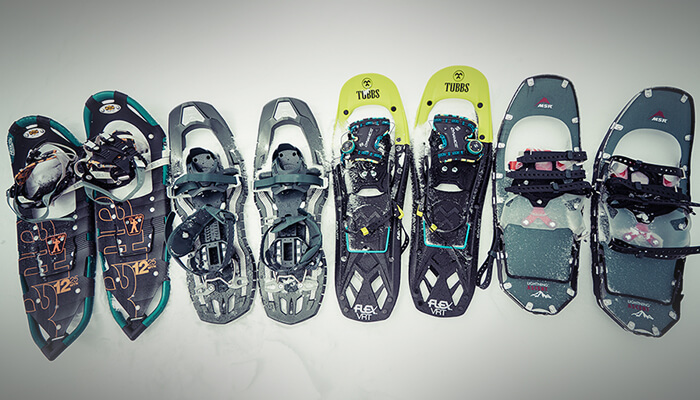
Comparison review: Comparing shoes from the four major snowshoe manufacturers, MSR, ATLAS, TSL, and TUBBS!
table of contents
Is that snowshoe really okay on that slope?
As we explained in our previous article, how to choose snowshoes from various manufacturers, including North America and Europe, are available, as mentioned in our previous article on how to choose snowshoes That in itself is great, but on the other hand, it is easy to overlook the fact that each product has its strengths and weaknesses, not only due to its purpose and purpose, but also the terrain and field that you expect In other words, to put it in extreme terms, just because it's expensive doesn't necessarily mean that something is good. This time, we will be using snowshoes from representative manufacturers with specific features that are different, and we will actually compare and test them in the same situation, to reveal the differences in the characteristics of each snowshoe, and we hope that this will be of some help in choosing the best snowshoes.
More related articles about snowshoes are available here
- Once you know it, you can't stop! Three points to know when choosing snowshoes: How to choose snowshoes
- Lineup comparison: We compared MSR snowshoes, so we'll introduce some recommended models.
- Lineup comparison: We compared TSL snowshoes, a talented one who only knows, so we'll introduce some recommended models.
Lineup comparison: We compared TUBBS snowshoes, a long-established brand that never stops innovation, so we'll introduce some recommended models.
About the snowshoes we compared
First of all, as a prerequisite, all the snowshoes we will be comparing this time designed for mountainous or backcountry However, among these, we chose a model that is suitable for all-purpose situations rather than a model that is very specific to the most. As for which size to choose, I chose the smaller size, ranging from 22 to 25 inches The reason is that when snow is steep and wet and heavy like in Japan, large sizes of 28 inches or more like in North America are overkill, and on the other hand, it is difficult to use. Also, if I'm a 61kg person and I'm going to spend a few nights in Japan, the weight is just 22 inch size (MSR LIGHTNING ASCENT), and even if I'm worried, there's a "float tail" that can be added to the heel to increase buoyancy, so overall, the 22 inch is the most convenient and affordable.
This comparison item
- MSR LIGHTNING ASCENT (22 inches) 41,040 yen
 MSR's finest snowshoes are probably the most popular in Japan as long as they watch mountain climbers passing by on site. Before I actually compared it, I felt that this product was a very well-finished product, with its excellent grip and flexibility to accommodate a variety of terrain and snow qualities. His ability is really true compared to others.
MSR's finest snowshoes are probably the most popular in Japan as long as they watch mountain climbers passing by on site. Before I actually compared it, I felt that this product was a very well-finished product, with its excellent grip and flexibility to accommodate a variety of terrain and snow qualities. His ability is really true compared to others.
- ATLAS 1225 28,500 yen + tax
Snowshoes for high-end mountain hiking from North American snowshoe maker ATLAS. Since ATLAS snowshoes are sold by Montbell, I feel like they are becoming more common in Japan, along with MSR (the impression is especially the snowshoes that are rented by mountain huts). Among them, this high-end model is the best feature of the binding, which allows you to put your feet in and pull the band right away, and the longest size of the 25-inch size in this comparison test. He is probably the No. 1 candidate for Shinyuki Walking.
- TSL SYMBIOZ EXPERT 38,000 yen + tax
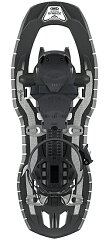 This is the only European (France) snowshoes. The mountains in Europe are more undulating than in North America, and are said to have to deal with a variety of situations, such as powder, wet snow, and freezing, depending on the slope, so it can be said that the mountains of Europe are actually closer to the Japanese environment. This is why the TSL snowshoes aren't bigger than necessary and are made of plastic frames with a more grippy feel. Furthermore, this top model is said to be the most comfortable to walk in due to its "hyperflexibility" structure, which makes the entire frame and bindings flexibly.
This is the only European (France) snowshoes. The mountains in Europe are more undulating than in North America, and are said to have to deal with a variety of situations, such as powder, wet snow, and freezing, depending on the slope, so it can be said that the mountains of Europe are actually closer to the Japanese environment. This is why the TSL snowshoes aren't bigger than necessary and are made of plastic frames with a more grippy feel. Furthermore, this top model is said to be the most comfortable to walk in due to its "hyperflexibility" structure, which makes the entire frame and bindings flexibly.
- TUBBS FLEX VRT 26,000 yen + tax
 This is a backcountry model from TUBBS, an American (actually a long-established) snowshoe maker, with its hip design typical of a North American manufacturer and a dial-type binding that is unexpected and does not come out of mountain manufacturers. Since it is designed for backcountry purposes, the wide 24-inch frame gives it a high buoyancy with powder and a grip that can withstand steep slopes.
This is a backcountry model from TUBBS, an American (actually a long-established) snowshoe maker, with its hip design typical of a North American manufacturer and a dial-type binding that is unexpected and does not come out of mountain manufacturers. Since it is designed for backcountry purposes, the wide 24-inch frame gives it a high buoyancy with powder and a grip that can withstand steep slopes.
Detailed evaluation using field tests
From December 2014 to early March 2015, multiple items were worn at the same time, mainly in Yatsugatake, Nasu, and Joetsu, in a variety of slopes, snow qualities and weather conditions.
Binding (easy to wear & fixed power): FLEX VRT & 1225
FLEX VRT > 1225 > LIGHTNING ASCENT = SYMBIOZ EXPERT
The ease of wearing snowshoes is an important factor that greatly affects usability. Also, if the fixed force is weak and it loosens quickly after you start walking, the risk of falling increases, and tightening each time will slow you down, which is not a good thing at all. Most fake snowshoes are often casual in this area, so they are not something you can take to the harsh winter mountains. The good and badness of the ease of wear and fixed power is largely due to the performance of the bidding, but after trying all four of them this time, the ones that were most comfortable to wear were the FLEX VRT Boa closure system and the 1225 Lap Pro binding. Both are surprisingly easy, just stick your feet in and turn the dial or pull the band without hesitation, making it surprisingly easy to use one hand and with gloves on. In particular, the binding on the FLEX VRT is evenly pressed and fixed on the entire instep, making it difficult to slip and not too tight, making it extremely comfortable. The TSL and MSR are not bad at all, but although the TSL has a weak toe fixing force and the MSR can be firmly fixed, fine adjustments are required to match the position of the foot and the tightening of the band perfectly, and it was difficult to use because it was stable and strong every time.
Easy to walk...SYMBIOZ EXPERT
SYMBIOZ EXPERT>LIGHTNING ASCENT>FLEX VRT>1225
This section mainly compares the ease of walking when walking snowshoes on relatively shallow, gentle terrain with relatively shallow snowfall. Snowshoes widen the width of your feet and move the heels, so you need to be a little concerned and get used to it in order to walk naturally. This discomfort is more or less common in every snowshoe, and among them, SYMBIOZ is by far the most comfortable and allows you to walk around the snowy mountains with ease. The main reason for this is the special plastic frame (photo below) that can bend (warped). This allows for natural foot movements without dragging your heel when walking, and the frame on the heel side is slim, making it difficult to catch your feet, and is light in weight, making it superior to other snowshoes in many ways.
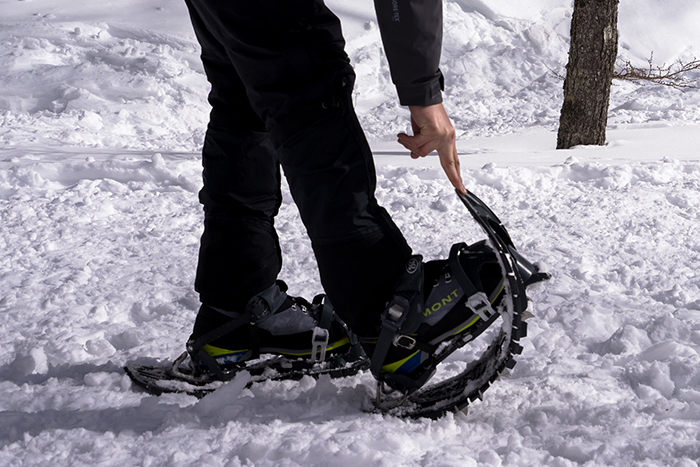
This bend allows for natural foot movements, whether you kick it off with your toes or when your heels touch the ground.
Buoyancy...1225
1225>FLEX VRT=LIGHTNING ASCENT>SYMBIOZ EXPERT
Regarding buoyancy, snowshoes with a wide frame area were able to walk comfortably, following the laws of physics. In addition to its buoyancy, the 1225 V-shaped tail and aluminum frame make walking even easier in deep fresh snow. However, my honest impression is that there was not a big difference, and even SYMBIOZ, which has the weakest buoyancy, is unlikely to be filled with powder.
However, strictly speaking, it is not buoyant, but when I walked through fresh, wet snow, the soles of the FLEX VRT were stuck together like dumplings, making it extremely difficult to walk. This may not be a very common environment in North America, but caution is required in Japan, especially when using it in low mountains or during seasons of snow.
Grip power...LIGHTNING ASCENT
LIGHTNING ASCENT>SYMBIOZ EXPERT>FLEX VRT>1225
The grip here is a summary of how easy it is to walk in situations where there is some kind of edge, such as climbing straight on steep slopes, traverse, or walking on frozen ground. In that sense, overall, the grips worked in any situation were LIGHTNING ASCENT and SYMBIOZ. When comparing these two, LIGHTNING ASCENT is advantageous when climbing directly on steep slopes. You'll see from the photo below, but the wide, sharp edges and high heel lifts using the entire frame made it easy to climb next to the side where the young people are struggling. On the other hand, when traverses on slopes, it is safer and easier to walk in if the ankles and snowshoes are made parallel to the slopes as much as possible, so the spike-like edges work evenly on the soles of the feet, and the SYMBIOZ is well-balanced with the moderate frame flexibility.
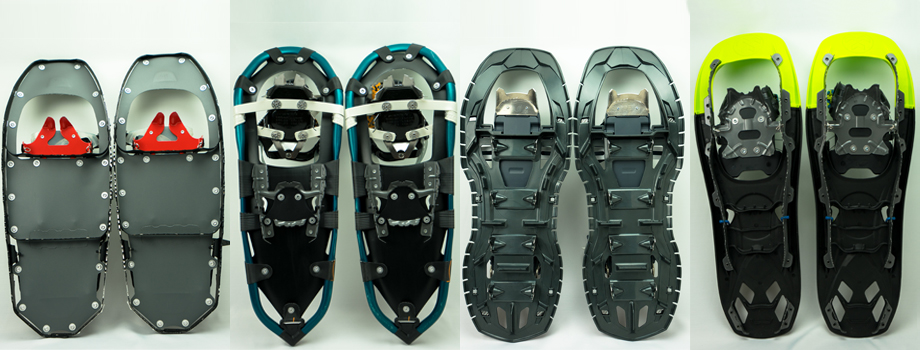
Comparison of Crumpons. The entire MSR frame is a clamp, so it has a wide range of edges compared to other areas, making it a multi-faceted one.
Easy to handle (weight & storage): LIGHTNING ASCENT
LIGHTNING ASCENT>SYMBIOZ EXPERT>1225>FLEX VRT
The bindings that are easy to wear and have a fixed strength are inevitably structurally complicated and bulky, but this is the point. Because the binding structure of LIGHTNING ASCENT is simple, they become Peshanko when removed, making them easy to attach to your backpack. Thanks to its lightness, it is the most easy to store out of the four, so I was able to get a headfirst in this category. On the other hand, the other three are inevitably bindings protruding, making it difficult to put it in a pack, and it's a hassle to carry around, so there are times when I feel like I'd prefer a compact, compact user, no matter how buoyancy is.
summary
As we have seen, all of them have high basic performance, but they have pros and cons, and I think you can see that it is hard to say that one of them is simply superior. For this reason, it is likely that evaluations will be divided depending on the field I am in, so I would like to conclude by sharing the recommendations from the OG editorial department.
Recommended 1: Versatile Best Snowshoes MSR LIGHTNING ASCENT
The high grip, buoyancy and ease of walking give it a different sense of security when used for winter climbing compared to other areas. It's relatively easy to carry, and with just one pair, you can give your stamp of approval that you can survive most terrain during the snowy season in Japan. However, be careful of high prices and sharp edges that catch on when walking. Since it's a good product, I thought I'd like a special cover that could be attached to a pack that could be safely and compactly carried.
Recommended 2: Show your true potential on technical terrain TSL SYMBIOZ EXPERT
This also seemed to be the most suitable option for use in Japan. However (although it is only relatively) I gave up the vest for a narrow margin, including the climbing performance caused by the small heel lift, the buoyancy of the better, and the finer parts of the body when it comes to fresh snow, but only those who tried it can understand the light walking sensation that is completely unaware of despite the widening width of the foot. With the exquisite sense of unity between the body and snowshoes and the fine edging, the Clampon will be the most effective in climbing that allows you to quickly run through more technical terrain than the deep, fresh snow Russell. The actual selling price seems to have also dropped considerably, and in that sense, this one must also provide a different sense of satisfaction than the MSR.




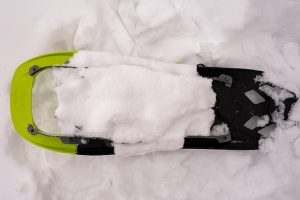

![(TSL) TSL Snowshoes SYMBIOZ EXPERT M size [SYEX]](https://images-fe.ssl-images-amazon.com/images/I/410GoLC5TaL._SS300_.jpg)
 Comparison of lineup: We've compared TUBBS snowshoes, a long-established brand that never stops innovation, so we'll introduce some recommended models.
Comparison of lineup: We've compared TUBBS snowshoes, a long-established brand that never stops innovation, so we'll introduce some recommended models.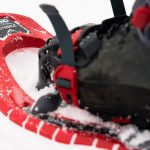 Comparison of lineup: We've compared TSL snowshoes, a talented person only knows, so we'll introduce some recommended models.
Comparison of lineup: We've compared TSL snowshoes, a talented person only knows, so we'll introduce some recommended models. From snow hiking to backcountry. The entrance to the wonderful snowy mountains, how to choose snowshoes wisely and 5 recommended models
From snow hiking to backcountry. The entrance to the wonderful snowy mountains, how to choose snowshoes wisely and 5 recommended models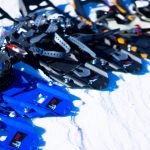 Lineup comparison: We compared MSR snowshoes, so we'll introduce some recommended models.
Lineup comparison: We compared MSR snowshoes, so we'll introduce some recommended models.